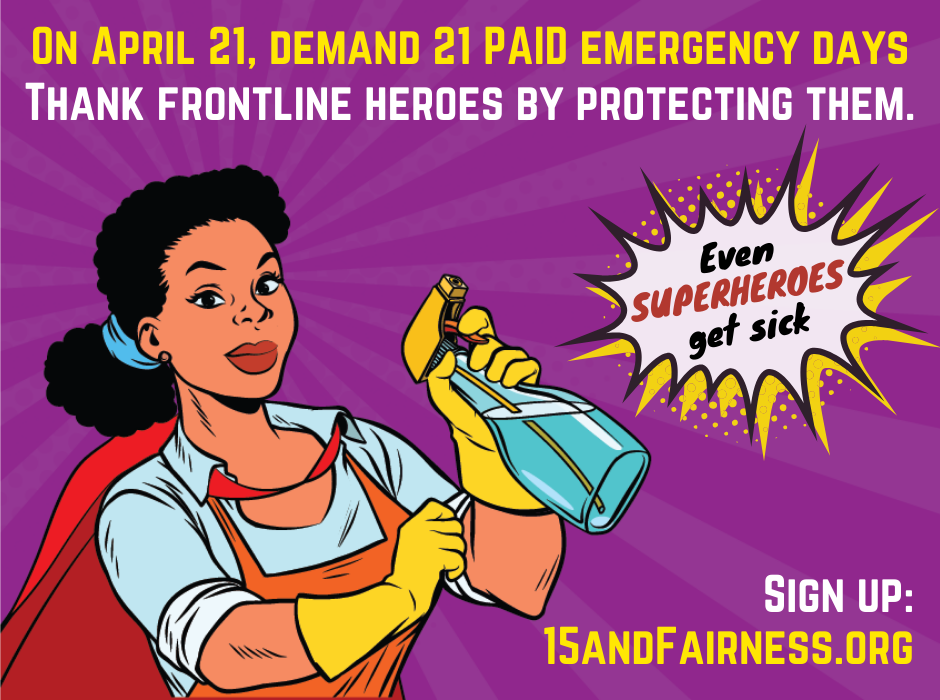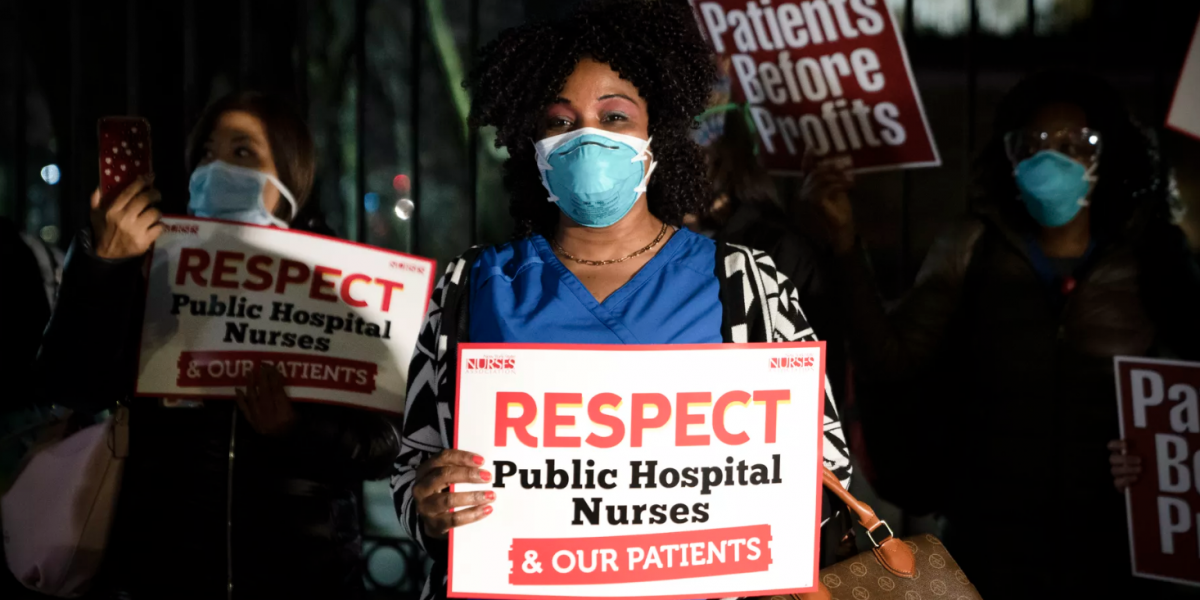Spring Magazine spoke with Srinivas Murthy, a critical care and infectious disease specialist, about the social and economic factors that have fueled COVID-19, and what the pandemic teaches us about how to build a healthy world.
You’ve explained that “historically, when an outbreak occurs, the research has primarily focused on the medical and biomedical response, and less so on the social sciences–including the fear, racism and misinformation that can spread. With COVID-19, we’re seeing a tremendous interest in not just accelerating the basic science work, but advancing the social sciences and policy research too. This is a positive step forward and will help to strengthen the global response.” Can you elaborate on how racism undermines pandemic response, and why responding to COVID-19 requires both a biomedical and a social response?
Racism is embedded in nearly all aspects of modern life, and the response efforts are no different; addressing it in all its forms is absolutely vital for us to solve this together. When the virus first emerged, the rapid blame and alienation of Asian communities was striking, and made for challenging public health messaging efforts around the world.
When people go straight to blaming others for bringing disease into their communities, rather than trying to help those that are infected, it reinforces the nativism that has caused so many problems in the past. What’s important is that we understand that we have choices in how respond to this virus—whether it’s through “othering” or stigmatizing communities where it’s more a problem, or demonstrating solidarity with those communities, and ensuring that the best care possible is put in place and that we work together with strong public health strategies. In the end, nobody can really solve this problem until everybody solves this problem, and that there cannot be an “us versus them” in a pandemic. We, collectively, will need to get over all of our past tendencies to avoid working outside of our traditional communities.
What this pandemic has demonstrated is that the old way of doing things, where we fend for ourselves, ignore communities and people outside of our bubble, and think that we can get ahead of each other, no longer works. It has demonstrated that a collectivist approach, where there is a common goal, with a common strategy to achieve that goal, is the only way forward. And for that, we will need to overcome the racism, and the power differential that is embedded within that racism, to ensure that communities around the world are united. You see that emerging again now, where the constant scapegoating of the World Health Organization for being too cozy with China, or directly blaming China for the current situation, has become a dominant narrative. As the internationalist movements of years ago outlined, we have common interests, and blame will not advance those.
For the COVID19 response, clearly a biomedical focus is important. But understanding the social implications of all of these issues is vital. Without it, and without understanding how best to work together and overcome racist policies that have existed for generations, it will be much more difficult to get past this. Look at India right now, which I think is a great microcosm of the outbreak. What’s happening to their migrant labour class, to their lower- or scheduled castes, to their Muslim population. All of them are being blamed, ostracized, beaten, and shunned. This pandemic has merely provided fuel for deep-seated fears and stigma that power structures are quick to employ and use as scapegoats; and how we battle those fears will take collective strength and power.
In the aftermath of the last respiratory pandemic (H1N1) over 10 years ago, international task forces concluded that better pandemic preparedness was required, including surge capacity and personal protective equipment like N95 masks. But the past decade has seen cuts to healthcare around the world, and now with COVID-19 we’re struggling with the same issues. Can you discuss the impact of economic austerity that preceded COVID-19?
I think the best evidence is seeing where regions have invested in public health, and where regions have not, and seeing how those regions have differed in their burden of disease. Austerity, where those vital services are deemed not-so-vital, if it hadn’t before, has shown its clear limitations in this.
We often like to speak of health system resiliency and how it can react and recover from stresses, and we’re testing that right now across the world. Clearly, the regions which have made excessive cuts to health systems over the past decades are seeing those effects now, and hopefully those lessons are being learned. Those investments, in things like PPE and providing adequately-trained and adequately-paid staffing, may not seem like much, but are clearly focused on protecting individuals and human resources.
When institutions start to see those protections as optional, in favor of ensuring adequate economic growth or avoiding further debt accumulation, for example, that trade-off clearly has shown what works, and what doesn’t in a crisis. Those investments in the common good, and knowing that those investments will not necessarily be visibly beneficial through traditional metrics immediately, speak to us re-defining what’s important: is it making sure people have decent work and trust their health system to take care of them, or is it to monitor debt-to-GDP ratios?
This pandemic provides a tool for us to realize how we build a world going forward, and whether we seize that opportunity will depend on us, and how important we think change is for us to build a better world. It will be difficult, unquestionably, since power structures are difficult to overcome. But the realization, through this pandemic, that we are stronger together, that trusting a capitalist system to save us from crisis is foolish, and that solidarity is fundamental for all of our problems, is vital. And our problems – climate change, racism, nativism – all have solutions that we can build from here going forward.
The concept of “flattening the curve” emphasizes the importance of reducing hospitalizations below hospital capacity. But you’ve published research on the wide variation in ICU capacity between countries and how this influences mortality rates. How does this apply to COVID/19?
Ensuring a health system that is resilient in the face of crisis, as I mentioned above, is absolutely crucial. Having the foresight to plan for these types of events is absolutely important, and demonstrates a system that does not just skirt on the edge of catastrophe every day simply to avoid spending more on health than it needs to.
I wouldn’t say that countries that spend more on high-level acute care will do better in outbreak such as this; I will say that countries that have coordinated systems, across a spectrum of illness and severity, so that patients can traverse the system from health to illness in a clear and coordinated way, will do better. Flattening curves to allow for hospitals to manage infected patients is important, but the solution is not merely to build more hospitals; it is to provide people the ability to avoid those hospitals in the first place, which builds back to enacting the social determinants of health as much as possible. If you have a healthier baseline, than you won’t need as many ICU beds, clearly, and you don’t build a healthier baseline by building more hospitals; you do it by minimizing inequality, providing access to care for all and ensuring that peoples needs are accounted for.
ICU capacity is not a good metric in and of itself: a country could spend all of its money on scaling up critical care beds, in the absence of adequate primary care or vaccine delivery, and it would be an entirely waste of money. But if ICU capacity is tailored to the priorities of the community at large, and integrated within a coherent system of public health and infrastructure, then it’s something useful to keep track of.
Viruses don’t discriminate, but the societies in which they circulate do. Studies are already finding disproportionate mortality rates for African Americans, and Canada lags behind in tracking such statistics. Can you discuss how socioeconomic factors influence COVID-19 mortality rates, and why addressing such factors is important for public health?
Like any disease, it’s heartbreaking to see our inequalities be magnified by this pandemic. I don’t think that anybody is surprised to see the rates of severe disease in African-Americans, compared to white-Americans. There remain deep-seated inequities in the American system that will take generations to overcome.
In Canada, we don’t even know the breakdown, however. Since we don’t routinely capture this data and share it nationally, we won’t be able to comment on whether similar inequities exist here, although I’m sure they do, whether it’s undocumented, First Nations, or other BIPOC. Public health includes intensive care outcomes, but it also includes making sure people have enough to eat, or they can get testing when they need it, or don’t have to work three jobs to feed their kids or can pay their rent without losing three quarters of their paycheque. And when those fundamental features of daily life are divided between groups and people, then you’re going to have problems.
You worked in Liberia during the local Ebola epidemic, and emphasized the importance of sufficiently trained and protected healthcare workers. In the context of a global pandemic, can you discuss the importance of protective equipment and protective policies for all health workers?
In that Ebola outbreak, one of the biggest challenges was ensuring adequate resources for hospital staff. We had people like me, flying in from Canada, acting the hero. But then you had people who lived there, getting paid pittance to do their work under strain and without adequate protections. There were a number of strikes, which obviously made handling the outbreak much more complicated, but were completely justifiable – workers rights and patients rights are intertwined, and you cannot have one without the other.
The hardest working people in the hospital right now are not doctors or nurses, who are getting nightly salutes and messages from prime ministers. It is the cleaners. All of our focus on PPE and material goods and everything is meaningless if we do not have adequate human resources to keep facilities clean and disinfected. And those human resources are never mentioned in our collective gratitude, and particularly given the precarity of much of their employment. This pandemic has exposed one thing, in that we acknowledge who our essential workers are – healthcare workers and low-wage workers who keep everything going. And we need to ensure that everybody gets the recognition they deserve.
Join the April 21 action to demand essential protections for all workers

Did you like this article? Help us produce more like it by donating $1, $2, or $5. Donate

